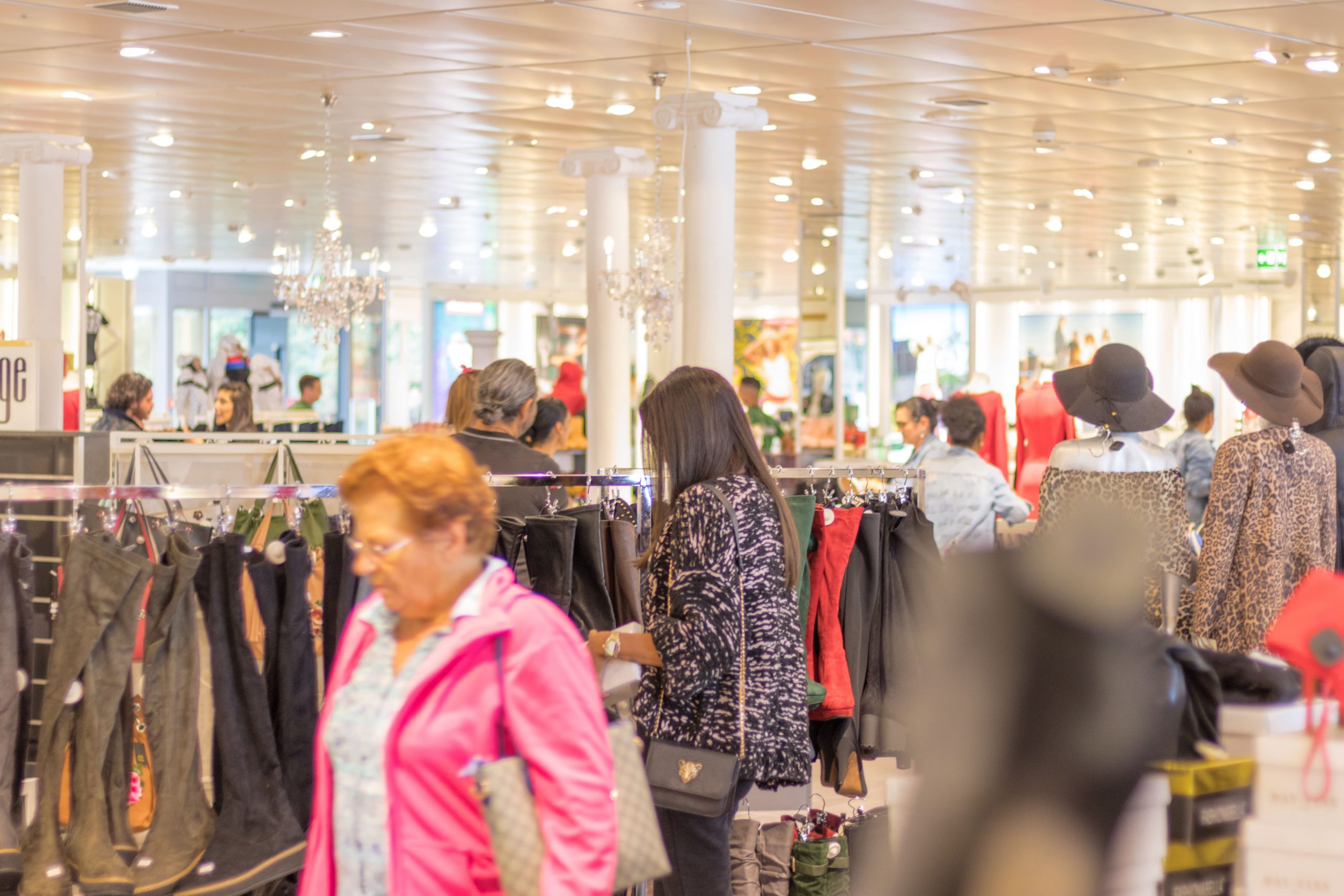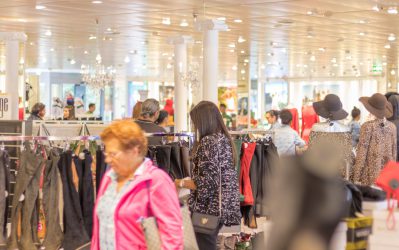
In the fast-paced world of retail, understanding customer behavior is essential. Retailers constantly strive to grasp what drives buying decisions, influences preferences, and shapes strategies, to cater to customers’ needs. Challenges arise from the complex, non-linear nature of customer journeys and the pervasive impact of digital technologies. These changes have made it challenging for retailers to track and predict customer behavior accurately. Moreover, the digital era has empowered customers, making them more discerning and less brand loyal. In this article, we explore key insights into customer behavior in retail, aiming to uncover actionable strategies that enhance the shopping experience and boost sales.
1. Impulse Purchases: Understanding the Urge to Splurge
” The thrill of the buy: Impulse purchases, though often seen as frivolous, can be a powerful driver of consumer behavior. By understanding the psychology behind these spontaneous decisions, retailers can unlock new opportunities to enhance customer satisfaction and boost sales.”
– Retail Strategist
Have you ever entered a store with a specific item in mind and ended up leaving with several additional purchases? You’re not alone! Emotions play a significant role in customer decision-making, especially when it comes to impulse purchases. Impulse purchases are a significant aspect of customer behavior in retail. Many customers are susceptible to the allure of eye-catching displays, strategically placed products, or enticing promotional offers. Harnessing the power of sensory marketing techniques can evoke customers’ emotions, stimulate their senses, and induce impulsive purchasing behavior. For example, use of music, lighting, and aromas to create a positive and inviting shopping environment. Understanding the triggers behind these spontaneous purchases can empower retailers to design more effective marketing and merchandising strategies to capitalize on these impulses.
2. Seasonal Shopping Patterns: Tapping into the Festive Frenzy
“Aligning our marketing efforts with seasonal shopping patterns ensures that we are in tune with our customer’s needs and expectations during the most crucial times of the year.”
– Marketing Manager
Throughout the year, customers’ shopping patterns are influenced by seasonal events and holidays. For retailers, this presents opportunities to align their marketing efforts with these occasions. Whether it’s preparing for Christmas, Black Friday, or Valentine’s Day, tailoring promotions and product offerings to match the festive spirit can lead to increased footfall and sales. Recognizing these seasonal trends enables retailers to stay ahead of the competition and better meet customer demands during peak periods.
Retailers can tailor their promotions and product offerings to match the festive spirit of different holidays by:
- Creating gift guides that feature popular products for the holiday season.
- Offering special discounts and promotions on items that are in high demand during the holidays.
- Decorating their stores to reflect the holiday season and create a festive atmosphere.
- Partnering with brands and influencers to promote holiday products and promotions.
The National Retail Federation reports that holiday sales account for approximately 20% of total retail industry sales annually, with Christmas being the most significant holiday for retail spending.
3. The Digital Influence: From Showrooming to Webrooming
“Embracing technology isn’t just about keeping up; it’s about crafting a seamless shopping journey where customers can explore both online and in-store offerings effortlessly.”
– E-commerce Director
The advent of technology has revolutionized customer behavior in retail. Many customers now engage in “webrooming,” where they research products online before making an in-store purchase. Conversely, “showrooming” involves customers visiting physical stores to examine products in person but then purchasing them online, often seeking better deals. Retailers can leverage these behaviors by providing seamless omnichannel experiences that bridge the gap between online and offline shopping, offering consistency and convenience to tech-savvy consumers. Social commerce is the convergence of social media and e-commerce. It allows customers to discover and purchase products directly from social media platforms.
Retailers can leverage social commerce by:
- Partnering with influencers to promote their products and services
- Hosting live shopping events on social media platforms
- Using social media to offer personalized product recommendations and targeted marketing communications
A survey conducted by PWC reveals that 36% of consumers engage in webrooming, while 24% participate in showrooming, highlighting the importance of integrating online and offline shopping experiences.
4. The Power of Social Proof: Building Trust through Reviews and Recommendations
“Our customers are our best advocates. Emphasizing authentic reviews and testimonials showcases the quality of our products and the satisfaction of our customers.”
– Customer Relations Manager
In today’s interconnected world, social proof plays a vital role in influencing customer behavior. Online reviews, ratings, and recommendations from friends or influencers significantly impact purchase decisions. Positive reviews can build trust and credibility for a brand, while negative ones can deter potential customers. Retailers should actively engage with their customers, encourage feedback, and respond to reviews, thereby fostering a sense of community and strengthening their brand reputation.
Positive customer reviews are essential for building trust and credibility. Retailers can encourage customers to leave honest feedback by:
- Making it easy for customers to leave reviews on their website and social media pages
- Responding to reviews in a timely and constructive manner
- Highlighting positive customer reviews on their website and marketing materials
According to BrightLocal, 88% of consumers trust online reviews as much as personal recommendations, emphasizing the impact of social proof on purchase decisions.
5. Navigating Cart Abandonment: Sealing the Deal
“By simplifying our checkout process and offering transparent pricing, we aim to minimize cart abandonment and provide a hassle-free shopping experience for our customers.”
– User Experience Lead
Abandoned shopping carts are a common headache for retailers. Customers often add items to their online carts but fail to complete the purchase. Understanding the reasons behind cart abandonment, such as unexpected shipping costs, complex checkout processes, or concerns about data security, is essential. Retailers can address these pain points by offering transparent pricing, streamlining the checkout process, and implementing trust-building measures, such as secure payment gateways and clear privacy policies.
Cart abandonment is a major challenge for retailers. To reduce cart abandonment, retailers can:
- Offer transparent pricing and shipping costs.
- Streamline the checkout process
- Implement trust-building measures, such as secure payment gateways and clear privacy policies
- Use re-targeting and abandoned cart recovery campaigns to remind customers about their abandoned carts and encourage them to complete their purchases
Research by Baymard Institute indicates that the average cart abandonment rate across industries is around 69.57%, signalling the importance of addressing common reasons for cart abandonment.
6. Personalization: Tailoring the Shopping Experience
“One-size-fits-all doesn’t cut it anymore. Personalization is the key to creating meaningful connections with our customers and enhancing their shopping journey.”
– Chief Marketing Officer
Customers increasingly seek personalized experiences that cater to their unique preferences. Retailers can harness the power of data analytics to understand individual shopping behaviors and preferences. Retailers can strengthen customer loyalty and enhance the overall shopping journey by offering personalized product recommendations, exclusive offers, and targeted marketing communications.
Retailers
can personalize the shopping experience by:
- Collecting and analyzing customer data, such as purchase history, browsing behavior, and loyalty program data
- Using this data to offer personalized product recommendations, exclusive offers, and targeted marketing communications
- Creating a seamless omnichannel experience that integrates online and offline shopping
Accenture research reveals that 91% of consumers are more likely to shop with brands that offer relevant offers and recommendations.
7. The Rise of Mobile Shopping: Embracing the Convenience
“Mobile shopping isn’t just a trend; it’s a retail revolution, empowering customers to explore, click, and buy with unprecedented convenience and ease.”
– Retail Innovation Specialist
With the prevalence of smartphones, mobile shopping has become a significant trend. Customers expect seamless mobile experiences, from browsing to checkout. Retailers should optimize their websites and apps for mobile devices, ensuring responsive designs and easy navigation to meet the demands of on-the-go shoppers.
To create a seamless mobile shopping experience, retailers should:
- Optimize their website and app for mobile devices
- Use responsive design to ensure that their website and app look good and function well on all screen sizes.
- Make it easy for customers to navigate their website and app
- Offer secure payment options and fast loading times
Statista reports that mobile e-commerce sales are projected to account for 54% of total e-commerce sales globally by 2021.
8. Loyalty Programs and Incentives: Building Lasting Relationships
“Our loyalty program isn’t just about rewarding purchases; it’s about acknowledging the trust our customers place in us and nurturing long-lasting relationships.”
– Customer Loyalty Manager
Customer loyalty programs are powerful tools for retaining customers and encouraging repeat purchases. By offering rewards, points, discounts, or exclusive perks, retailers can foster brand loyalty and increase customer retention. These programs not only incentivize future purchases but also create a sense of appreciation and belonging among customers.
When designing a loyalty program, retailers should consider the following:
- The type of loyalty program they want to offer (e.g., tiered loyalty program, point-based program, cashback program)
- The rewards they want to offer (e.g., discounts, free products, exclusive experiences)
- How they will communicate with members about the program and its benefits
A study by Bond Brand Loyalty found that 69% of consumers are more likely to stick with a brand with a good loyalty program.
In the ever-evolving landscape of retail, understanding customer behavior is an ongoing process. By analyzing data, embracing technology, and adopting customer-centric strategies, retailers can gain valuable insights into their customers’ preferences, needs, and pain points. Armed with this knowledge, they can create tailored shopping experiences, build lasting relationships, and ultimately, drive success in a highly competitive market. Customer behavior insights are not just a luxury; they are a necessity for retailers striving to thrive in today’s dynamic retail environment.
Author: Nidhi Tiwari, senior excutive at iE3 Innovations, a technology firm.

